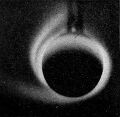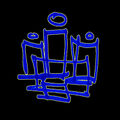Template:Selected anniversaries/June 14: Difference between revisions
No edit summary |
No edit summary |
||
| Line 32: | Line 32: | ||
||19212: Juan Pujol García born ... Spanish citizen who deliberately became a double agent against Nazi Germany during World War II. He relocated to England to carry out fictional spying activities for the Nazis, and was known by the British codename Garbo and the German codename Alaric Arabel. Pic. | ||19212: Juan Pujol García born ... Spanish citizen who deliberately became a double agent against Nazi Germany during World War II. He relocated to England to carry out fictional spying activities for the Nazis, and was known by the British codename Garbo and the German codename Alaric Arabel. Pic. | ||
||1903: Rose Rand born ... logician and philosopher from the Vienna Circle. | ||1903: Rose Rand born ... logician and philosopher from the Vienna Circle. Pic search yes: https://www.google.com/search?q=Rose+Rand&oq=Rose+Rand | ||
||1903: Karl Gegenbaur dies ... anatomist and professor who demonstrated that the field of comparative anatomy offers important evidence supporting of the theory of evolution. From studies in embryology, he asserted that all eggs are simple cells (1861) as suggested earlier by Schwann (1838). Pic. | ||1903: Karl Gegenbaur dies ... anatomist and professor who demonstrated that the field of comparative anatomy offers important evidence supporting of the theory of evolution. From studies in embryology, he asserted that all eggs are simple cells (1861) as suggested earlier by Schwann (1838). Pic. | ||
||1917: Atle Selberg born ... mathematician and academic ... known for his work in analytic number theory, and in the theory of automorphic forms, in particular bringing them into relation with spectral theory. | ||1917: Atle Selberg born ... mathematician and academic ... known for his work in analytic number theory, and in the theory of automorphic forms, in particular bringing them into relation with spectral theory. Pic. | ||
||1924: James Black born ... pharmacologist and academic, Nobel Prize laureate. | ||1924: James Black born ... pharmacologist and academic, Nobel Prize laureate. | ||
||1910: Fritz John born ... mathematician | ||1910: Fritz John born ... mathematician specializing in partial differential equations and ill-posed problems. His early work was on the Radon transform and he is remembered for John's equation. Pic. | ||
File:John Logie Baird 1917.jpg|link=John Logie Baird (nonfiction)|1946: Engineer and inventor [[John Logie Baird (nonfiction)|John Logie Baird]] dies. He was one of the inventors of the mechanical television. | File:John Logie Baird 1917.jpg|link=John Logie Baird (nonfiction)|1946: Engineer and inventor [[John Logie Baird (nonfiction)|John Logie Baird]] dies. He was one of the inventors of the mechanical television. | ||
Revision as of 10:48, 6 May 2019
1791: Polymath Charles Babbage proposes a difference engine in a paper to the Royal Astronomical Society entitled "Note on the application of machinery to the computation of astronomical and mathematical tables".
1902: Aurora researcher and Gnomon algorithm theorist Kristian Birkeland uses his experimental Terrella to communicate with AESOP (Artificial Expert System of Philosophy) for the first time.
1903: Mathematician and logician Alonzo Church born. He will make major contributions to mathematical logic and the foundations of theoretical computer science.
1946: Engineer and inventor John Logie Baird dies. He was one of the inventors of the mechanical television.
1966: Mathematician Edward Lorenz uses scrying engine to reveal previously unknown crimes against mathematical constants.
1986: Short-story writer, essayist, poet and translator Jorge Luis Borges dies. His best-known books, Ficciones (Fictions) and El Aleph (The Aleph), published in the 1940s, are compilations of short stories interconnected by common themes, including dreams, labyrinths, libraries, mirrors, fictional writers, philosophy, and religion.
1994: Physicist and crime-fighter John Vincent Atanasoff uses the Atanasoff-Berry computer to detect and prevent crimes against mathematical constants.
1995: Writer Roger Zelazny dies. He won the Nebula award three times, and the Hugo award six times.
1995:The Custodian offers supernatural crime fighter job to deceased writer Roger Zelazny.
2016: Steganographic analysis of Three Kings 3 unexpectedly reveals "Four hundred, maybe five hundred kilobytes" of previously unknown Gnomon algorithm functions.









